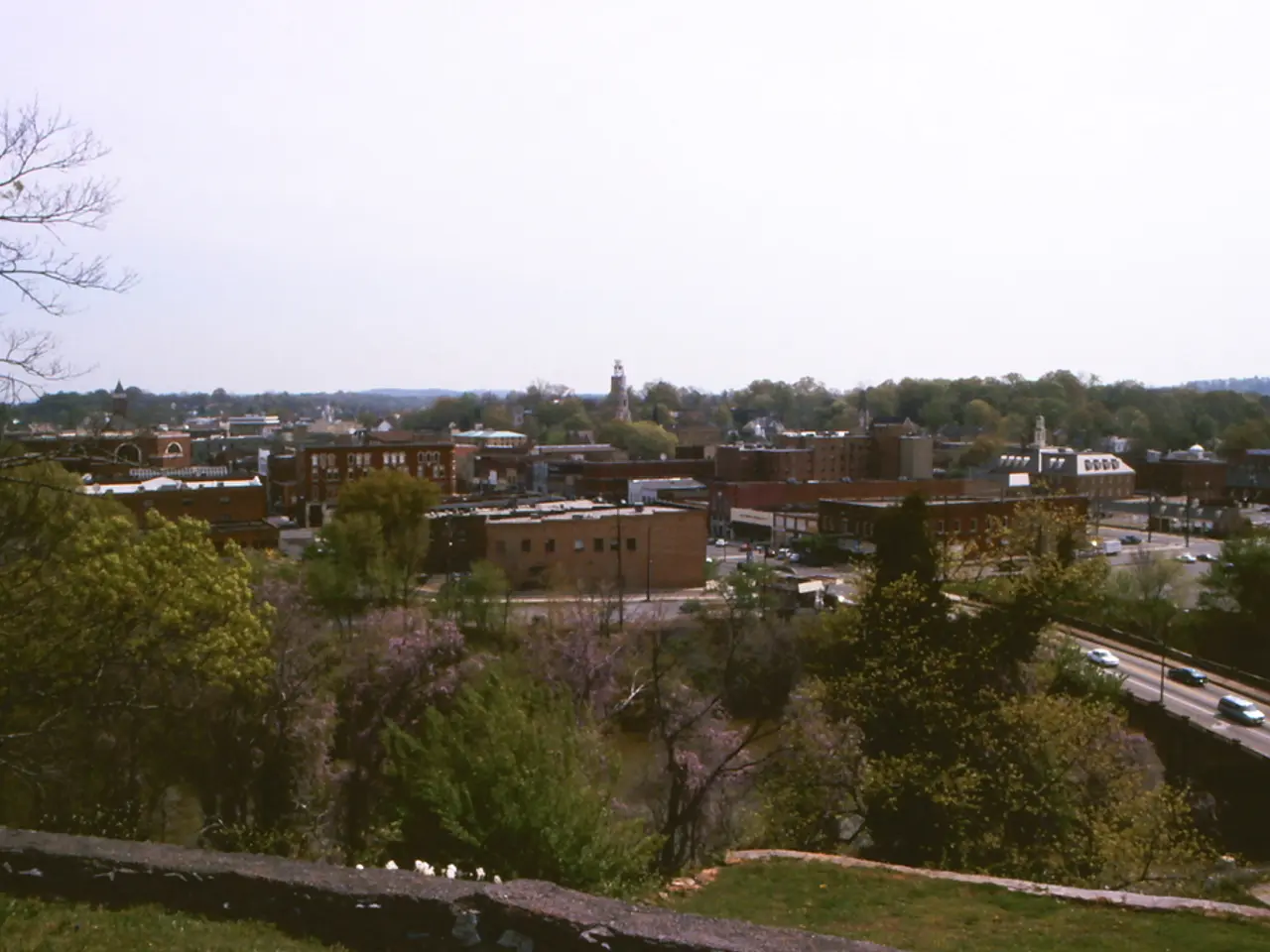A Fresh Approach to Wildfire Home Insurance
Fire Protection Innovation: Exploring the Potential of Environmentalists' Proposed Wildfire Countermeasure in Your Locality
In response to the escalating issue of wildfire damage in the United States, particularly in California, a fresh approach to homeowners insurance has emerged. This new model, spearheaded by The Nature Conservancy (TNC) and the Center for Law, Energy, and the Environment (CLEE) at the University of California, Berkeley, offers a promising solution for homeowners struggling to secure affordable and accessible insurance in high-risk areas.
The innovative insurance policy, introduced in April, was developed in partnership with insurer Willis and Globe Underwriting. It provides a California homeowners association (HOA) with $2.5 million in wildfire coverage, the first of its kind.
This policy differed from traditional insurance offerings by tying coverage and pricing directly to the community's wildfire prevention efforts. The policy covers 1,345 acres of the HOA's common land, including hiking trails, campgrounds, and other recreational areas. Interestingly, it doesn't cover individual dwellings.
In this trailblazing model, parametric insurance is used, where a payout is triggered by meeting a predefined threshold or event, in this case, the number of acres or severity of acreage burned. Parametric insurance is gaining popularity due to its speed and convenience, as it doesn't require damage assessments [2].
Reducing Risk, Lowering Premiums
The policy's defining feature was its direct link to community forest management. TNC, who pays the premiums, chose Tahoe Donner because the HOA had been practicing ecologically based forest management for years. Research indicates that effective forest management, such as tree thinning, waste removal, and prescribed burning, can significantly reduce the damage wildfires cause to homes [3].
However, Dave Jones, director of the Climate Risk Initiative at UC Berkeley School of Law's CLEE, pointed out that insurers are not currently accounting for forest management in their pricing and underwriting [3]. This policy, which boasts a 39% lower premium and 89% lower deductible compared to standard coverage, demonstrates the potential for savings through such management [3].
While the Tahoe Donner policy doesn't cover individual homes, homeowners still benefit because the HOA's forest management program lowers the wildfire risk for the entire community [3].
Encouraging Prevention and Protection
The ultimate goal is to motivate other communities to invest in climate-change mitigation efforts. The Biden-Harris Infrastructure Investment and Jobs Act set aside $5 billion for federal wildland fire management efforts, but experts estimate a minimum investment of around $5 billion to $6 billion per year is required to address the highest-priority wildfire risks between 2021 and 2031 [4].
"The goal is to encourage more of this activity," Jones said [4].
Navigating Insurance Challenges and Protecting Your Property
Despite these efforts, wildfires cause severe damage in the US, particularly in California, where the homeowners insurance market has been disrupted. With increased frequency and loss, many insurers have stopped providing coverage, and those that do often restrict it in high-risk areas. Residents who can secure coverage must contend with steep premiums, while those who can't must rely on the state-sponsored Fair Access to Insurance Requirements (FAIR) Plan [5].
To help mitigate the risks, TNC advocates several steps for homeowners, such as building with fire-resistant materials, creating a "defensible" space around homes, having a water access plan, and reviewing insurance policies for coverage and exclusions [6].
In the end, a combination of systemic changes in the insurance industry, community-level wildfire prevention efforts, and informed homeowners can help protect property and communities from the ravages of wildfires.
[1] Nature Conservancy. (n.d.). Wildfire Resilience Insurance Policy in California. Retrieved from https://www.nature.org/urgent-issues/climate/climate-solutions/conserving-homes-and-hospitals-in-the-path-of-wildfire/wildfire-resilience-insurance-policy-in-california.xml
[2] National Association of Insurance Commissioners. (2020, February 13). Parametric Insurance. Retrieved from https://www.naic.org/content/Investment-Services/Investments/Parametric-Insurance-33073-2.htm
[3] Tahoe Donner Association. (2021, April 28). Nature Conservancy Launches First-of-its-Kind Wildfire Resilience Insurance Policy in California. Retrieved from https://tahoedonner.com/news-culture/news/nature-conservancy-launches-first-of-its-kind-wildfire-resilience-insurance-policy-in-california
[4] The Nature Conservancy. (2021, March 15). How Much Money Will it Take to Save California from Wildfire? Retrieved from https://www.nature.org/content/article/how-much-money-will-it-take-to-save-california-from-wildfire
[5] National Public Radio. (2020, September 8). Uncounted Wildfire Losses Add Up In California, Leaving Struggling Homeowners In The Lurch. Retrieved from https://www.npr.org/2020/09/08/910985814/uncounted-wildfire-losses-add-up-in-california-leaving-struggling-homeowners-in-t
[6] Federal Emergency Management Agency. (2021, December 7). How to Protect Your Home from Wildfire. Retrieved from https://www.ready.gov/wildfires#building-design-and-materials
- This innovative insurance policy, which is a collaboration between TNC, CLEE, Willis, and Globe Underwriting, employs a parametric approach, where coverage and pricing are directly tied to the community's wildfire prevention efforts, such as forest management.
- The policy's implementation in the Tahoe Donner community, where forest management practices have been in place for years, demonstrates the potential for significant savings in premiums and deductibles for homeowners, despite not covering individual dwellings.
- As more communities adopt similar climate-change mitigation strategies, such as effective forest management, it could stimulate investment in defi (decentralized finance) ventures focused on environmental science and climate-change solutions, thereby creating a symbiotic relationship between finance, science, and the environment.




